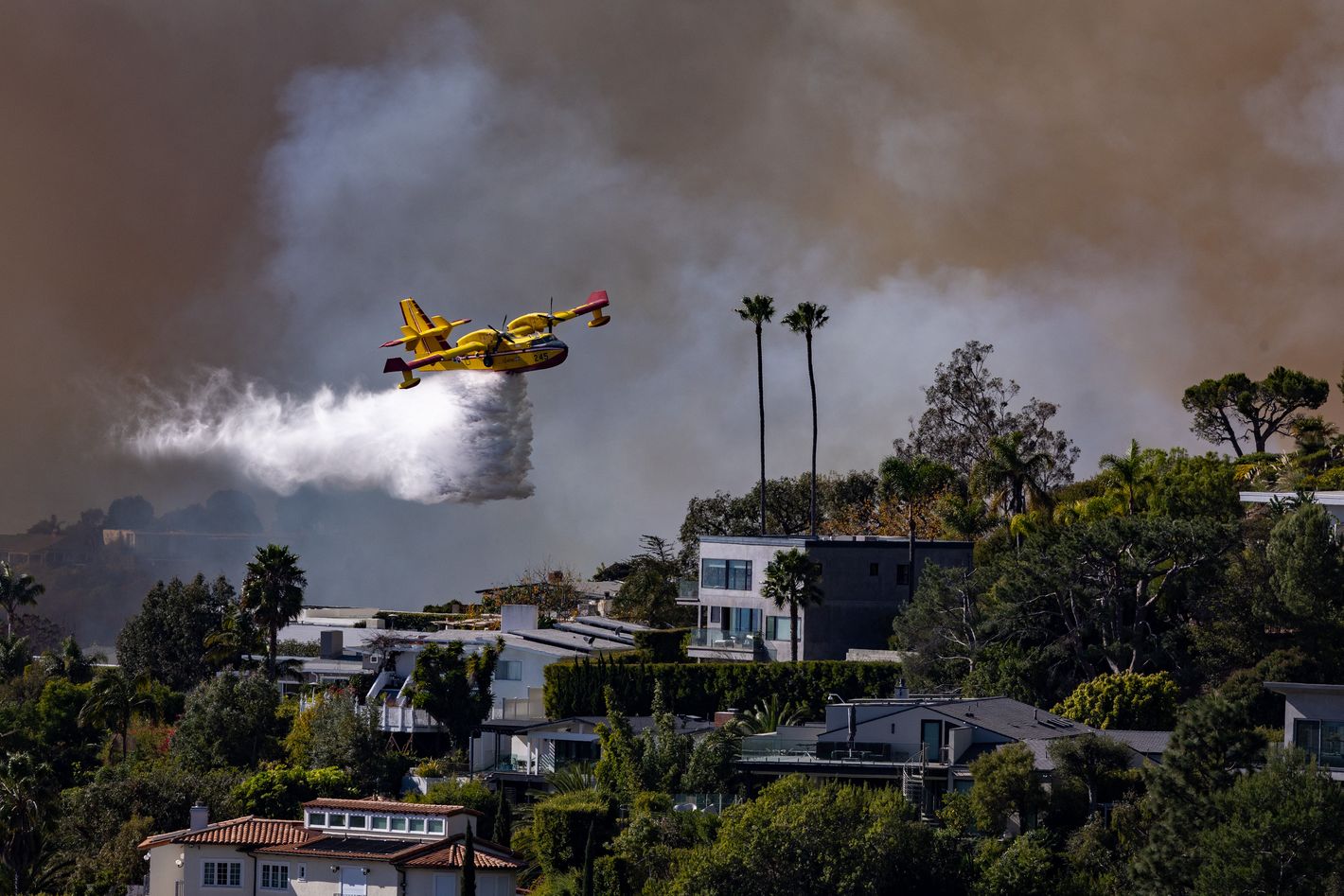Photo: Brian van der Brug/Los Angeles Times/Getty Images
Aerial firefighting is already one of the most dangerous kinds of aviation there is. Pilots must maneuver heavy, sluggish planes over rough terrain at low altitude, often amid severe turbulence and poor visibility. Now aerial firefighters battling the Los Angeles wildfires are facing an additional danger: illegal drones. On Thursday a “Super Scooper” plane fighting the Palisade fire collided with a drone that tore a hole in its wing, forcing it to land and taking a powerful weapon out of the fight when it was urgently needed.
In the aftermath the FAA promised severe punishment for anyone caught flying drones in a way that interferes with firefighting, with penalties of up to 12 months in prison and $75,000 in fines. But the uncomfortable reality is that there is little that authorities can do to prevent illegal drone flights, as this incident and the recent New Jersey drone swarm panic both demonstrate.
Thursday’s accident occurred as firefighters struggled to contain a blaze that had consumed more than 17,000 acres, though it was spreading less aggressively thanks to a temporary lull in the winds. The aircraft, a twin-engine CL-415, is a Canadian-built amphibious aircraft designed specifically for aerial firefighting. It can skim along the surface of a lake or ocean and scoop up 1,600 gallons of water at a time, allowing it to carry out many sorties in a short interval since it doesn’t have to return to an airport to refill. A picture posted online by the L.A. County Fire Department showed a fist-size hole in the leading edge of the plane’s left wing. According to reporting by the WarZone, the incident led to the temporary grounding of all aircraft tasked to the Palisades fire.
SuperScooper grounded after drone strike pic.twitter.com/a7ApxeNHm1
— L.A. County Fire Department (@LACoFDPIO) January 10, 2025
The FAA has known for years about the risk that drones pose for conventional aircraft. Over the past decade it has effectively reorganized the entire U.S. airspace in a way that makes it possible to deconflict drones and manned aircraft, and last year it implemented a rule mandating that all drones weighing more than half a pound carry a system called Remote ID that broadcasts a unique identifier linking the device to a database of users. “The FAA is working on developing Remote ID data-sharing capabilities for law enforcement so they can have access to FAA registration information,” the FAA told me.
Under normal circumstances, operators can fly their drones at altitudes of up to 400 feet so long as they can maintain a line of sight on the vehicle. This keeps them far below where most airplanes operate except when taking off or landing. Firefighting aircraft are different, however. To place their loads most effectively, water bombers need to get down close to the fire. To keep drones and other aircraft out of their way, the FAA establishes no-fly zones called Temporary Flight Restrictions, or TFRs, where wildfire fighting is taking place. It established a TFR over the Palisades fire on January 9 that is currently scheduled to run until January 23.
Officials haven’t said whether they know what kind of drone the Super Scooper collided with or whether it was transmitting a Remote ID signal. According to the Los Angeles Times, the county’s chief fire official said that the FBI was sending what he called “aerial armor” to prevent unauthorized drone flights. The FBI’s Los Angeles office confirmed to me that it has tasked its anti-drone unit, the Counter Unmanned Aircraft System Task Force, to investigate the incident but did not provide details about its equipment, techniques, or capabilities.
The interdiction of rogue drones is no easy task. Drones are small, difficult to spot, and can appear and disappear quickly. Even if they’re transmitting a Remote ID signal, observers on the ground require special equipment to detect it, and this equipment has a limited range. As we recently reported, officials were flummoxed by mass drone sightings in New Jersey recently and proved unable to identify a single one.
The job of enforcing drone rules is not entirely impossible, however. In 2020, an LAPD helicopter was responding to a burglary in Hollywood when it struck a drone and the pilot had to make an emergency landing. Officers on the ground found the drone in pieces on the ground, and investigators were able to retrieve images from its memory chip that led them to an area resident named Andrew Hernandez, who they charged in Federal Court with “unsafe operation of unmanned aircraft,” an offense punishable by up to a year in prison. Hernandez pleaded guilty and was sentenced to two years probation.
In the case of the L.A. wildfires, it’s not clear if any debris from a drone was collected; without it, hopes of catching the culprit seem slim.
Given the challenge of actively enforcing the rules, the most effective way to minimize the danger of aircraft-drone collision may simply be to keep drone operators cognizant of the rules and hope that they use good sense. Judging by their recent behavior, there’s a lot of progress to be made on that front. Drone images and video footage of the L.A. wildfires have proliferated on social media, including the accounts of mainstream news organizations. (The FAA will sometimes grant waivers to TFRs, but it has said that it has not done so in relation to the wildfires, meaning that any drone footage that pans over the Palisade burn zone was probably shot illegally.) Until a significant majority of drone owners understand how important it is to stay out of no-fly zones, accidents like the one that took place on Thursday are likely to continue.

